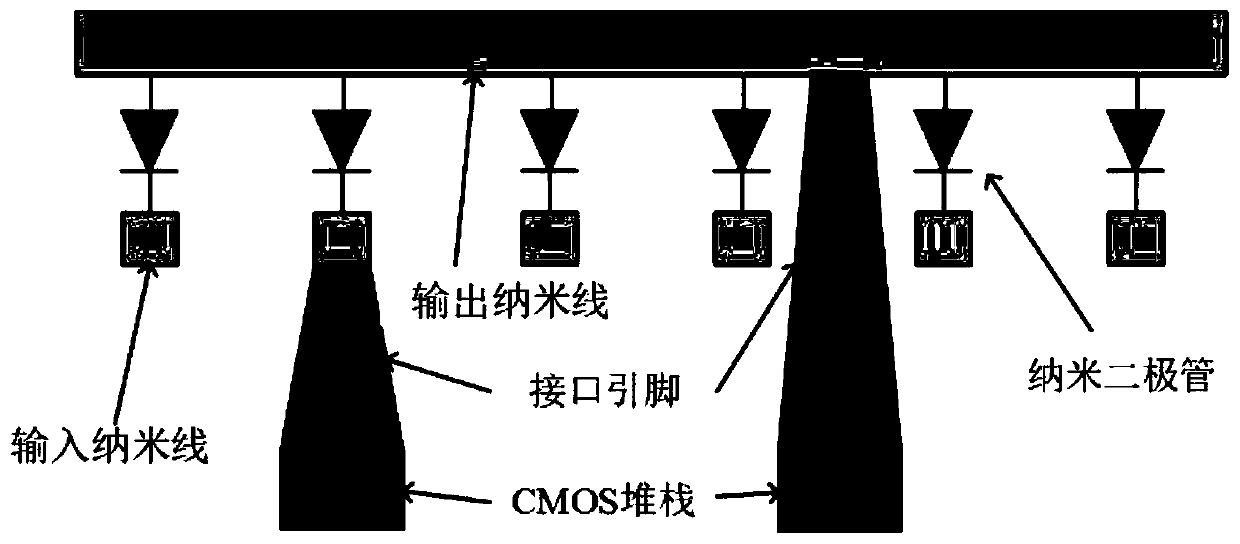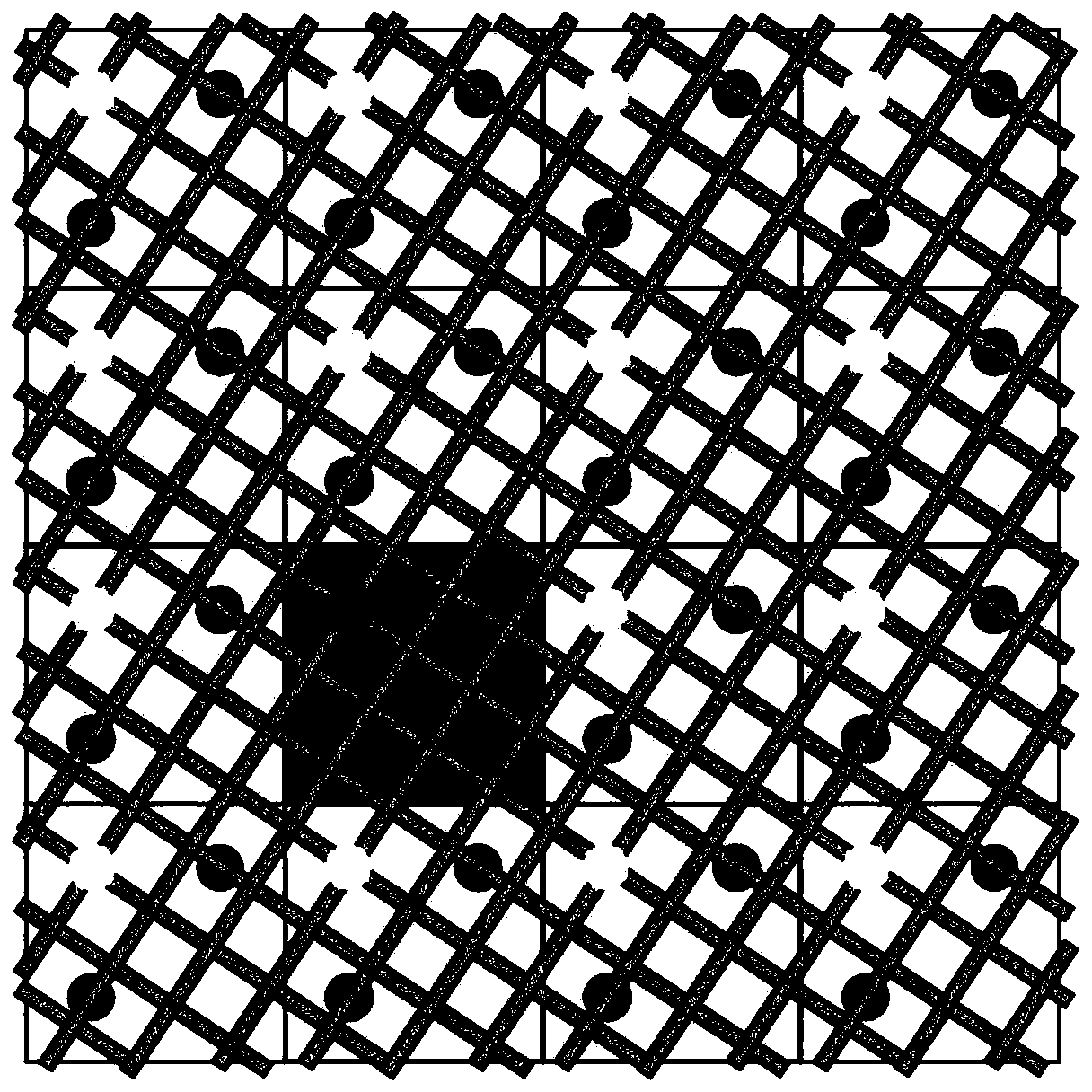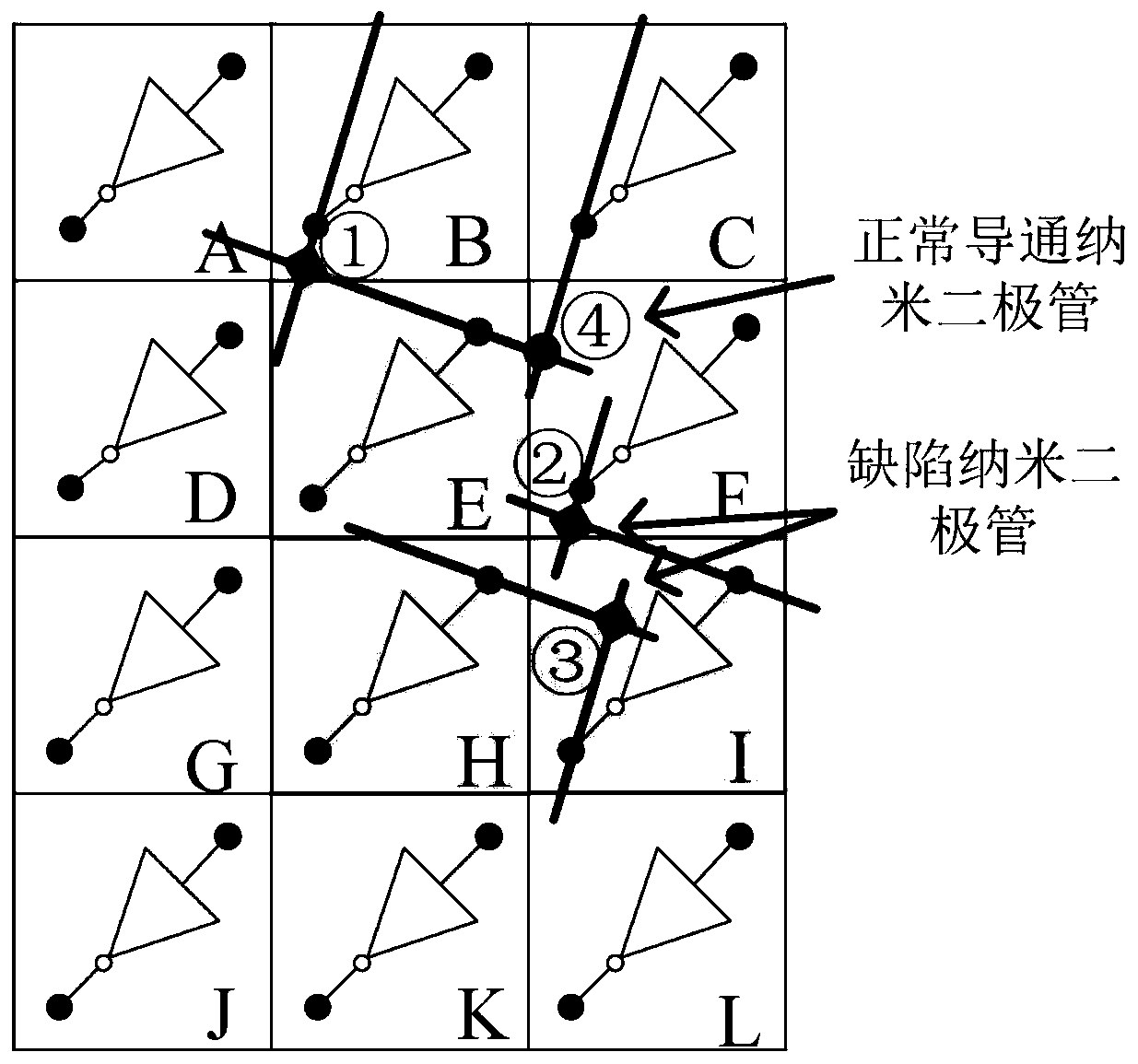Efficient fault tolerance method for nano CMOS (Complementary Metal-Oxide-Semiconductor Transistor) circuit capable of effectively utilizing normally-closed defect unit
A normally closed, defect technology, applied in CAD circuit design, nanotechnology CAD, electrical digital data processing and other directions, can solve the problems of low utilization, poor solution quality, slow mapping speed, etc., to optimize performance and simplify fault tolerance. difficulty, and the effect of improving the success rate of mapping
- Summary
- Abstract
- Description
- Claims
- Application Information
AI Technical Summary
Problems solved by technology
Method used
Image
Examples
Embodiment 1
[0055] Embodiment 1: Taking the s27 circuit in the ISCAS'89 reference circuit as an example, the sequence diagram of the original input signal is shown.
[0056] Figure 4 In the shown ISCAS'89 logic circuit structure, there are 7 original input signals and 8 layers of logic levels. The dotted line marks the critical path. It can be seen that the critical path contains 1 original input signal i 5 , 9 gate nodes. Only i is input among the 7 original input signals 1 The signal is not transmitted to the critical path node. right Figure 4 The raw input signal sequencing method for the logic circuit shown consists of the following steps:
[0057] Step ①: From logic level 1 (eg Figure 4 As shown in L1 in ), search for the original input signal located at the key node in the logic level, arrange the original input signal next to the sorted original input signal, such as node g in L1 11 , whose original input signal is i 5 , the key node g in L2 16 has two input signals: g ...
Embodiment 2
[0063] Example 2: Will Figure 5 A simple circuit with three inputs and one output is shown hierarchically mapped to Image 6 In the shown 4×3 nanometer CMOS circuit, the utilization of normally-off defective cells is performed.
[0064] When the radius of the connected domain of the nano-CMOS circuit is r=2, the size of the connected domain of the nano-CMOS unit is 4, that is, any nano-CMOS unit can realize logic functions within the range of four nano-CMOS units up, down, left, and right. Will Figure 5 The three inputs of the simple circuit shown are respectively mapped on the nano-CMOS units B, F, and D, among which B and F will become the sequential inputs of the normally-closed defect units E and I through the nano-diodes ① and ② with normally-off defects, respectively. At the same time, the normally closed defect unit I will become the sequential input unit of the normally closed defect unit H through the nanodiode ③ with normally closed defects.
[0065] Using the n...
Embodiment 3
[0072] Example 3: In such as Figure 7 Shown r=2, in the nanometer CMOS circuit of 4*3 size pair Figure 5 A simple circuit with three inputs and one output is shown for high-efficiency fault tolerance.
[0073] Figure 7 The connected domain size of the shown nanometer CMOS circuit is 4, and the Figure 5 The three inputs of the simple circuit shown are respectively mapped on nanometer CMOS cells A, C, and F, and the gate node g 1 and g 2 Has been mapped on the nanometer CMOS unit B, I respectively. The nano-CMOS unit B becomes the sequential input unit of the normally-closed defect unit E through the normally-closed defect nano-diode ①. Gate node g to be mapped 3 The input gate node g of 1 and g 2 The mapped nanometer CMOS cells B and I have no intersection of connected domains.
[0074] exist Figure 7 Defects shown in nanometer CMOS circuits for Figure 5 Gate node g shown 3 The process of mapping and fault tolerance of the overall circuit includes the followin...
PUM
 Login to View More
Login to View More Abstract
Description
Claims
Application Information
 Login to View More
Login to View More - R&D
- Intellectual Property
- Life Sciences
- Materials
- Tech Scout
- Unparalleled Data Quality
- Higher Quality Content
- 60% Fewer Hallucinations
Browse by: Latest US Patents, China's latest patents, Technical Efficacy Thesaurus, Application Domain, Technology Topic, Popular Technical Reports.
© 2025 PatSnap. All rights reserved.Legal|Privacy policy|Modern Slavery Act Transparency Statement|Sitemap|About US| Contact US: help@patsnap.com



